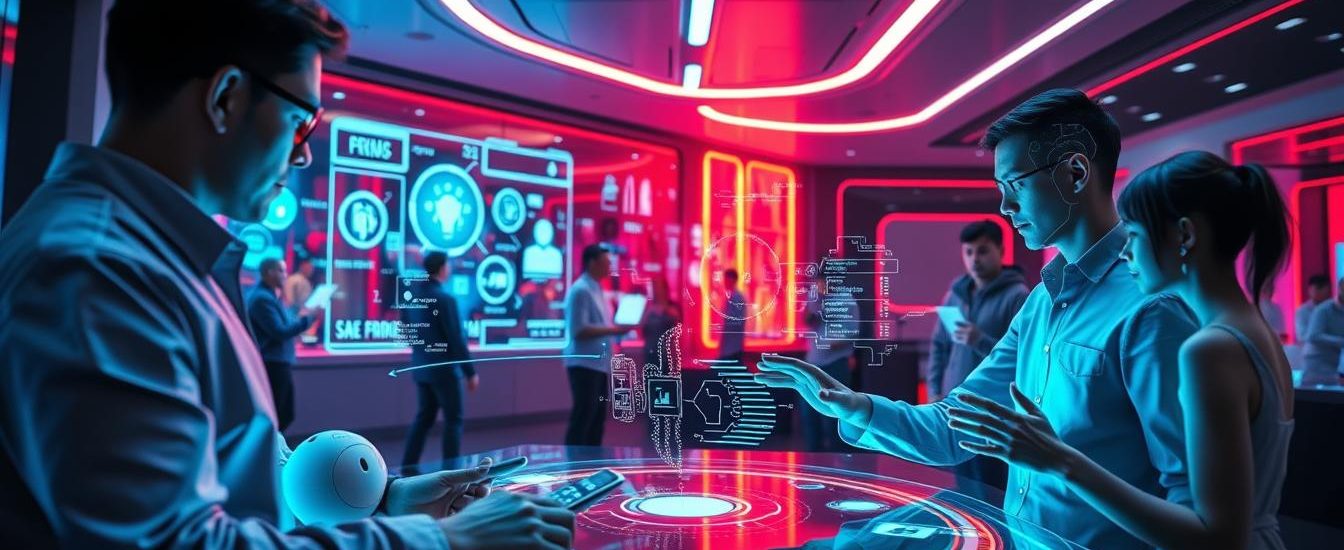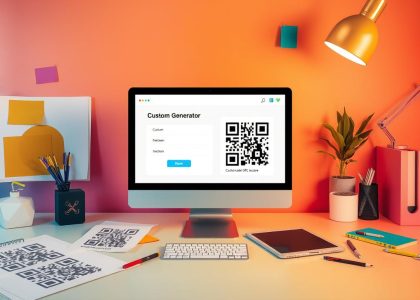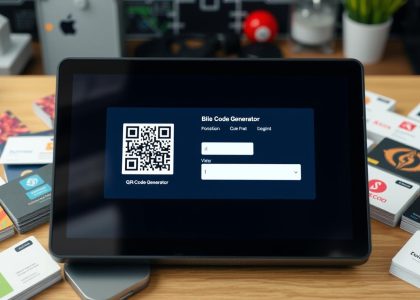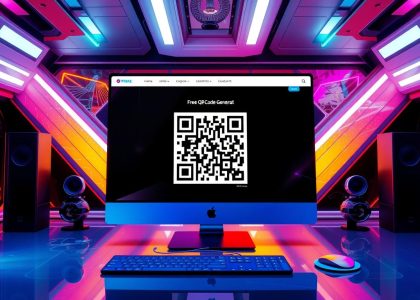In today’s world, we need ways to interact without touching things. This need grew even more after the COVID-19 pandemic. QR codes were once popular, but now they’re facing new competition. These new touchless technologies offer better security, ease of use, and more.
This article will look into these new contactless technologies. We’ll see how they are changing how we interact with the digital world.
Key Takeaways
- Contactless interactions have become essential in the digital age, especially after the COVID-19 pandemic.
- Traditional QR codes are being challenged by more advanced touchless technologies.
- Innovative solutions offer enhanced functionality, security, and user experience compared to QR codes.
- Exploring the latest advancements in contactless technology is crucial for businesses and consumers alike.
- The article will guide readers through the evolving landscape of modern contactless solutions.
The Evolution of Contactless Technology
The business world has changed a lot with digital technology. Now, customers can easily order food and more without touching anything. This shift has made things better for everyone, from digital menus to easy mobile ordering.
From Barcodes to Modern Solutions
It all started with barcodes, which made things easier for stores and shoppers. But now, we have better tech that makes things even more convenient and safe. It’s all about making things better for the customer.
The Digital Revolution in Customer Interactions
Now, we have digital ways to talk to customers, making things more personal and easy. Companies use cool tech like Near Field Communication (NFC), Bluetooth beacons, and mobile apps with built-in scanners. This tech makes things smooth and safe for everyone.
This new tech has made things better for businesses and customers. It helps them understand what people want better. As tech keeps getting better, companies need to keep up to give great digital menus and mobile ordering experiences.
“The future of customer interactions is digital, contactless, and tailored to individual preferences. Businesses that embrace this evolution will thrive in the age of modern consumer expectations.”
What Is Better Than QR Codes?
In today’s world, businesses are always looking for better ways to connect with their customers. QR codes have been popular, but now, there are even better options. These new technologies make it easier and more fun for businesses and customers to interact.
Near Field Communication (NFC) is one such alternative. It’s a wireless tech that lets devices share data quickly and safely. NFC is great for things like paying without touching a screen or getting product info fast. It’s easier than using QR codes, which need you to open a camera app.
Augmented Reality (AR) is another big leap forward. It mixes the real and digital worlds for a cool experience. AR lets businesses add digital stuff, like product info or games, to the real world. This makes for a memorable and fun experience for customers.
- NFC technology offers a more seamless and secure user experience compared to QR codes.
- Augmented Reality (AR) creates an immersive and interactive customer experience that goes beyond the limitations of QR codes.
- Digital watermarks and other innovative solutions are also emerging as viable alternatives to traditional QR codes.
As businesses look for new ways to engage with customers, these technologies are key. They make the customer journey better and more meaningful. By using these modern tools, businesses can offer a top-notch experience and stay ahead of the competition.
Near Field Communication (NFC): The Superior Alternative
Near Field Communication (NFC) is changing the game in contactless tech. It’s a better choice than QR codes for businesses and users. It offers safer and smoother interactions.
How NFC Outperforms QR Codes
NFC lets you tap or touch for secure interactions, unlike QR codes that need a camera scan. This makes it easier and less prone to mistakes. Plus, NFC is great for safe payments and data sharing.
Security Features of NFC Technology
NFC is all about security. It uses top-notch encryption to keep your data safe. This means your payment info and other sensitive data are protected from fraud.
Implementation Costs and ROI
Getting started with NFC might cost a bit more than QR codes. But, the benefits and savings in the long run are worth it. It boosts customer happiness, reduces fraud risks, and saves money for businesses.
“NFC technology is revolutionizing the way businesses and consumers interact, offering a secure, user-friendly alternative to traditional contactless solutions.”
Bluetooth Beacons: Revolutionary Proximity Marketing
Bluetooth beacons are changing the game in touchless technologies, unlike traditional QR codes. These small devices are making a big impact in retail and hospitality. They help businesses connect with customers in new ways.
Bluetooth beacons use proximity technology to send messages to mobile devices. They are placed in key spots to send offers and info based on where you are and what you do. This makes for a more personal experience for customers.
Unlike QR codes, Bluetooth beacons don’t need you to scan them. They connect with your phone automatically. This makes for a smoother, more natural interaction. It’s perfect for today’s touchless world.
Driving Engagement and Loyalty
Bluetooth beacons can do a lot to improve your shopping experience. Here are a few ways:
- They give you personalized product suggestions and deals based on what you’ve looked at.
- They help you find what you need in the store.
- They offer special deals for loyal customers.
- They give you updates on wait times and special events.
By using these features, businesses can make your shopping experience better. This can lead to more loyalty and sales.
Implementing Bluetooth Beacons
Adding Bluetooth beacons to your marketing plan needs careful thought. You have to think about where to put them, how to connect with apps, and how to use the data they collect.
Even though it takes some money to start, the benefits can be huge. They help you understand your customers better and improve your marketing. This can lead to more sales and happier customers.
Bluetooth beacons are set to be big in the future of marketing. They offer a personal and data-driven way for businesses to connect with customers. This is changing how we shop and interact in the real world.
Mobile Apps with Built-in Scanners
In today’s digital world, mobile apps have grown beyond just scanning QR codes. They now offer a wide range of features that meet the needs of both businesses and customers. These apps make mobile ordering easy and provide digital menus that are simple to use. They have changed how we interact with the world around us.
Advanced Features and Capabilities
Mobile apps are no longer just for scanning QR codes. Now, they come with many advanced features that make our lives easier. Some of these include:
- Robust barcode and QR code scanning capabilities
- Integrated mobile ordering and payment processing
- Seamless access to digital menus and product information
- Augmented reality (AR) integration for immersive product visualization
- Personalized recommendations and tailored offers
Integration with Existing Systems
The real strength of these mobile apps is how well they work with existing systems. They use APIs and cloud-based solutions to connect with:
| Integration Point | Benefit |
|---|---|
| Point-of-Sale (POS) systems | Streamlined order processing and inventory management |
| Customer Relationship Management (CRM) platforms | Personalized experiences and targeted marketing campaigns |
| Loyalty and rewards programs | Enhanced customer engagement and retention |
By working well with these systems, mobile apps with built-in scanners help businesses offer a better customer experience. This leads to more mobile ordering and digital menu use.
Digital Menu Solutions Beyond QR
The hospitality industry has changed a lot in the digital age. Digital menu solutions are now leading the way. They offer a more engaging and personalized dining experience.
Mobile apps are a big part of this change. They let customers easily browse and order from digital menus. This makes ordering faster and reduces the need for physical contact. It’s a cleaner and more efficient way to dine.
Digital menu solutions also include interactive kiosks and tabletop displays. Customers can explore menu options and customize their orders. They can even learn more about the dishes they choose. This makes dining more fun and helps customers make better choices.
These solutions also let restaurants tailor the dining experience for each customer. They use data and analytics to suggest menu items and promotions based on what each customer likes. This makes customers happy and helps restaurants sell more and keep customers coming back.
| Feature | QR Code Menus | Digital Menu Solutions |
|---|---|---|
| Interactivity | Limited | Highly Interactive |
| Personalization | None | Highly Personalized |
| Ordering Process | Manual | Streamlined |
| Hygiene | Moderate | Improved Contactless |
Digital menu solutions are set to become the new standard in the hospitality industry. They offer a more engaging, personalized, and efficient dining experience. By using these new technologies, restaurants can meet the changing needs of their customers.
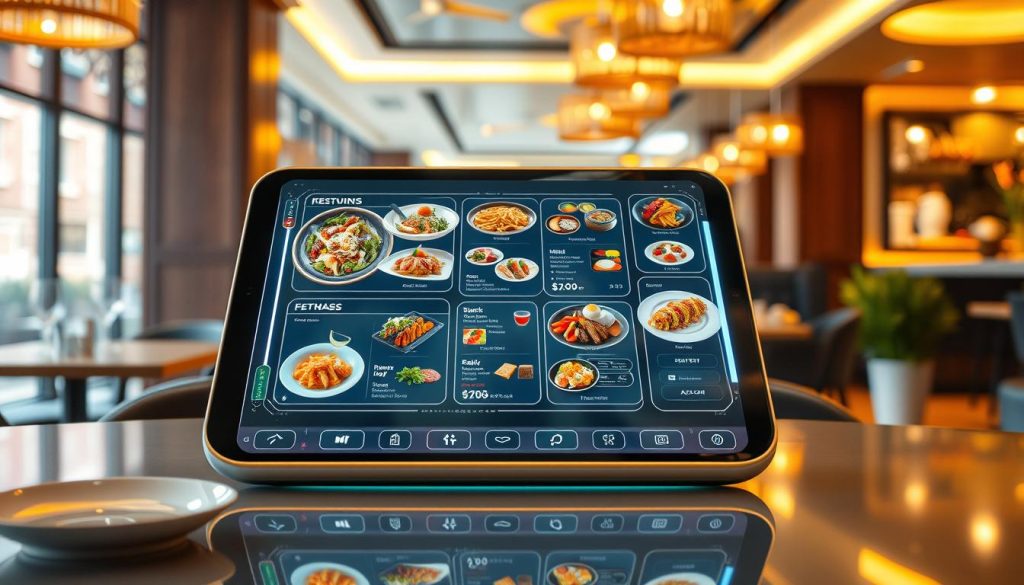
Augmented Reality: The Future of Interactive Engagement
Touchless technologies are becoming more popular, and augmented reality (AR) is leading the way. It’s a new way to connect with customers, offering more interaction and personalization than ever before.
AR Applications in Retail and Services
Retailers and service providers are using AR to create amazing experiences. Imagine trying on clothes virtually or seeing how furniture looks in your home before buying. These new ways of interacting can boost sales and keep customers coming back.
Customer Experience Enhancement
AR can turn simple interactions into unforgettable moments. Customers can get detailed product info, watch tutorials, and even test products virtually. This mix of digital and physical worlds makes the customer experience better, building loyalty and engagement.
AR shows the industry’s focus on innovation and putting customers first. As we move forward, this technology promises to change how we interact with our favorite businesses.
Biometric Authentication Methods
Biometric authentication is becoming a top choice for secure payments and access control. It uses unique human traits like fingerprints, facial features, or voice patterns to verify identity. This makes payments and access safer and more convenient.
Fingerprint Scanning
Fingerprint scanning is a common biometric technology. It uses an individual’s fingerprint patterns to grant access or approve transactions. You can find fingerprint scanners in smartphones, laptops, and access systems. They offer a smooth and secure way to authenticate users without keys or cards.
Facial Recognition
Facial recognition technology is also growing fast. It analyzes facial features to identify and authenticate users. This tech is used in retail, hospitality, and transportation to make safe payments and contactless interactions easier.
Voice Authentication
Voice recognition is another new biometric method. It verifies identity through voice characteristics like pitch and tone. This tech is great for hands-free interactions, like in-vehicle payments or smart home systems. It’s a secure and easy alternative to old methods.
| Biometric Authentication Method | Key Features | Applications |
|---|---|---|
| Fingerprint Scanning |
|
|
| Facial Recognition |
|
|
| Voice Authentication |
|
|
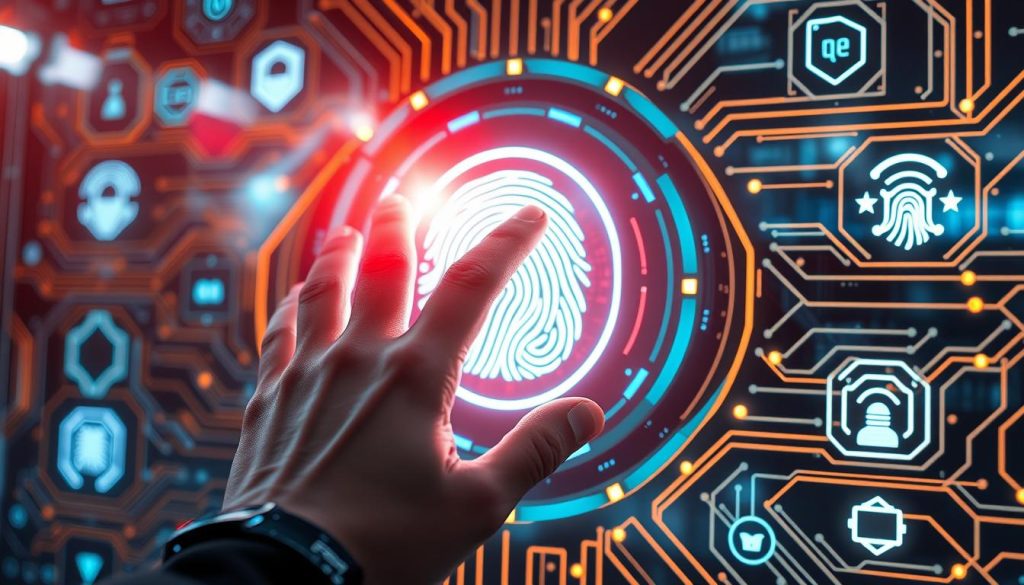
As technology advances, biometric authentication will become even more important. It ensures safe payments and contactless interactions in many fields. These innovative solutions offer a secure and easy way to replace old methods. They make a future where security and convenience are both possible.
Conclusion
Contactless technology has grown a lot since QR codes. Now, we have Near Field Communication (NFC), Bluetooth Beacons, and mobile apps with scanners. These new tools make things easier, safer, and more fun for everyone.
These modern options are better than QR codes in many ways. They offer more security, cost less to set up, and help businesses market better. By using these alternatives, companies can meet the high digital standards of today’s customers.
The future of contactless tech looks even more exciting. With Augmented Reality (AR) and biometric authentication, we’re on the verge of something big. These new tools will change how we interact, making experiences more real and personal. This could lead to more loyal customers and new ways for businesses to grow.


